Introduction
Jump to...
- Why use Notion for project management?
- How to use Notion: the basics
- How to use Notion for project management
- Why use Scribe with Notion for project management?
- Best practices for planning a project with Notion
- Conclusion
In today's fast-paced world, effective project management is crucial for success. Notion stands out as a versatile and user-friendly platform that can streamline your project management process.
In this blog post, we'll explore how to use Notion for project management and maximize its potential.
TL;DR: Notion project management
- Notion allows users to seamlessly manage and track projects, tasks and meetings in one place.
- Scribe is an AI-powered process documentation tool that integrates with Notion to streamline project management.
- The ultimate guide on how to use Notion for project management includes steps such as creating workspaces and databases, defining properties, visual project management, task management, project documentation, collaboration and communication, tracking tasks, reviewing and adjusting, sharing and collaborating, and archiving completed projects.
Why use Notion for project management?
With Notion, users can seamlessly manage and track their projects, tasks, and meetings all in one place. You can import and migrate projects from other platforms like Asana, making it easy to centralize all relevant information.
By connecting wikis, notes and documents, Notion provides a streamlined and organized approach to project management.
The benefits of using Notion for project management
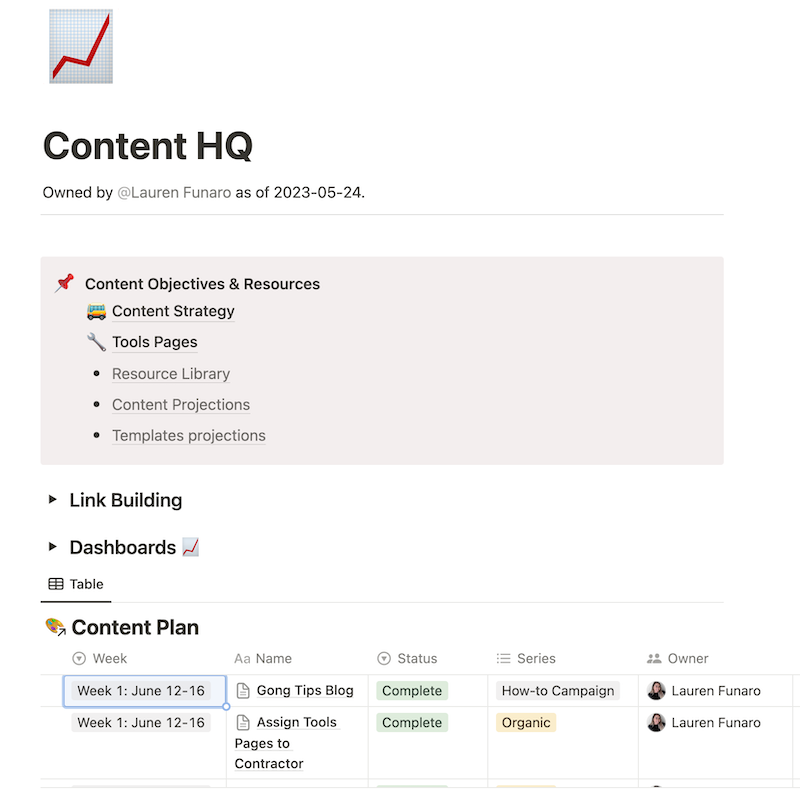
1. Organize your workspace
Create a customized workspace that suits your project management needs. Make a workspace for each project, and within it, create different pages for tasks, timelines and resources.
2. Create a project dashboard
Create a project dashboard by using tables, calendars and Kanban boards. Track your project's performance with key metrics, deadlines and milestones.
3. Collaborate with your team
Invite team members to your workspace and assign tasks to individuals. Notify team members about updates or changes, and ensure everyone is on the same page with collaboration and feedback.
4. Use templates and integrations
Notion offers a wide range of templates designed for project management, which can be customized to fit your projects.
Notion also integrates with popular tools like Scribe, Trello, Google Calendar, and Slack, allowing you to streamline your workflow.
5. Track progress and set goals
Track your tasks with to-do lists, progress bars and timelines. By setting goals and deadlines, and regularly updating your progress, you can identify bottlenecks and keep your project on track.
6. Document and share information
Use Notion for project documentation, to share meeting notes and to store important files. You can also share specific pages or entire workspaces with clients or stakeholders, ensuring transparency and collaboration.
7. Stay mobile with Notion
Notion is available on both desktop and mobile devices, making it accessible wherever you go.
{{banner-short-v2="/banner-ads"}}
How to use Notion: the basics
There are many features and tools that can be used in Notion to build your projects, but some of the most common include:
- Databases are a great way to store and organize project data. You can create databases for tasks, milestones, resources and more.
- Pages are used to create documents, presentations and other types of content. You can use pages to store project plans, meeting notes, SOPs and other documentation. Download Scribe to capture and embed visual process guides.
- Blocks are the fundamental building blocks of your Notion pages. They can be used to add text, images, tables, code, and other content to your pages.
- Templates are pre-made Notion pages that you can use as a starting point for your projects. There are templates available for a variety of projects, such as product roadmaps, marketing campaigns and event planning.
- Dependencies can be used to track the relationships between tasks. This can help you to ensure that tasks are completed in the correct order.
- Filters can be used to view specific information in your databases. This can be helpful for finding tasks that are due soon, tasks that are assigned to you or tasks that are in a particular status.
- Automations can be used to automate tasks in Notion, freeing up your time so that you can focus on other things.
Notion projects & task templates
Notion's projects & task templates offer a range of tools to help you manage multiple projects simultaneously.
- Use task properties like assignee, due date and status to organize and track task progress.
- Get a holistic view of ongoing projects, daily tasks and events.
- Project schedules, roadmaps, calendars, and task management help you manage various types of work.
- Task types enable the creation of tags for different types of tasks, facilitating task batching.
- Priority scores help in sorting and prioritizing tasks based on importance.
- Project descriptions provide concise summaries of each project.
- Communicate and collaborate on projects through comments.
- Add rich content like Scribe step-by-step guides, images, videos and code to build your documentation.
- Use reporter assignments to record the person who first noticed any issues.
- Create custom properties using various property types.
- Measure projects as a percentage through a visual progress bar.
How to use Notion for project management
Notion offers a lot of flexibility and customization to suit your specific needs.
Here's a step-by-step guide on how to use Notion for project management.
Step 1: Create a workspace
Start by signing into your Notion account or creating one if you haven't already. Then download Scribe to capture step-by-step guides for all of your processes. Here's how to get started ➜
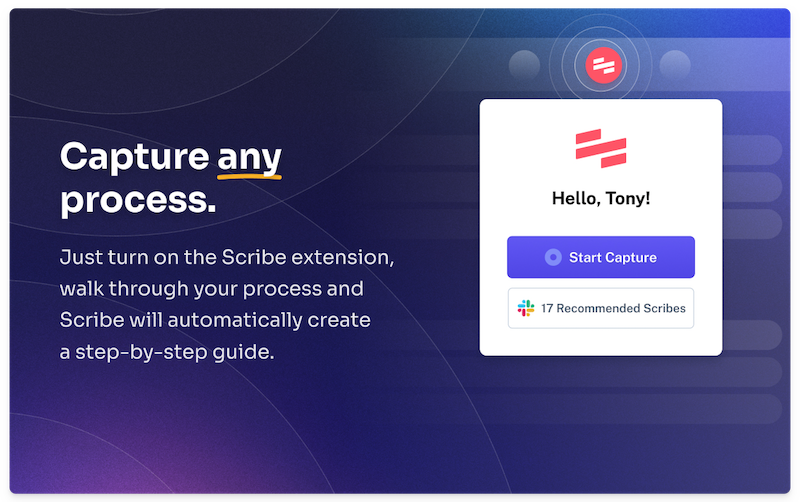
Create a workspace for your project management. You can organize multiple projects within this workspace.
Step 2: Create a project database
Inside your workspace, create a new database to store project-related information. To do this, click the "+" button and select "Database."
Step 3: Define your database properties
Customize your project database by defining your properties. Common properties include:
- Project Name: The title of the project.
- Project Description: A brief overview of the project.
- Status: To track the project's progress (e.g., Not Started, In Progress, Completed).
- Priority: Assign a priority level to each project.
- Due dates: Set deadlines for projects.
- Assignee: Assign team members responsible for each project.
- Tags: Categorize projects by type or department.
To add any additional processes, simply link or embed your Scribes in their own property.
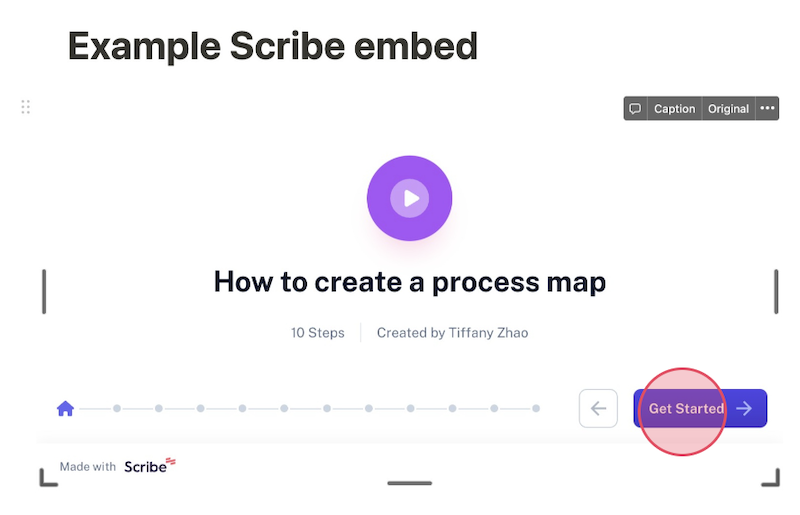
Step 4: Add projects to the database
Populate the database by adding your projects as individual entries. Fill in the relevant information for each project.
Step 5: Set up visual project management
If you prefer a visual project management approach, you can create Kanban boards or Gantt charts.
Kanban boards:
Use columns such as "To Do," "In Progress," and "Done" to visually manage tasks and projects.
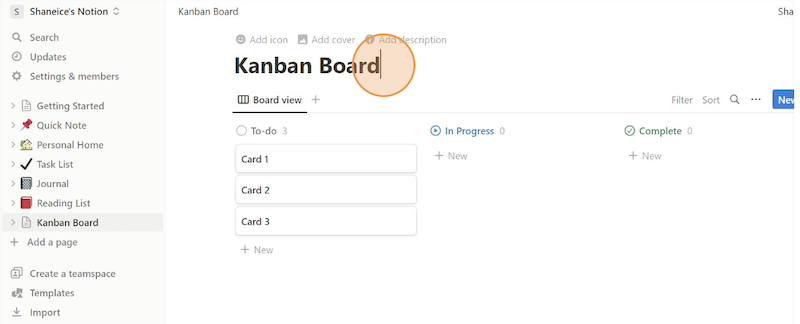
Gantt charts:
Create a table with columns for tasks, start dates and end dates, then use the timeline view to generate a Gantt chart.
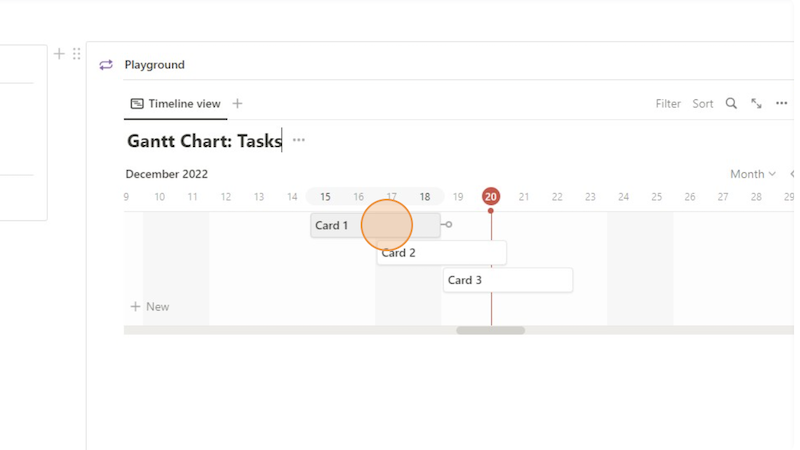
Step 6: Task management
Within each project entry, create a list of tasks and subtasks using bullet points, checkboxes or tables.
- Assign tasks to team members and set due dates.
- Use the @ mention feature to notify team members about tasks or updates.
- Attach files, links, and other relevant documents to relevant tasks for easy access.
Be sure to experiment with different features and templates to create a workflow that works best for you and your team.
Step 7: Create a workspace for your project documentation
This will help you to keep your project documentation organized and separate from your other work. You can use Notion to:
- Create a project charter with a Notion page.
- Track your project tasks with a Notion database.
- Create a work breakdown structure (WBS) with a Notion table.
- Use Notion documents to create a risk management plan, change management plan, issue tracking log, a lessons learned register, and more.
Step 8: Build your project documentation
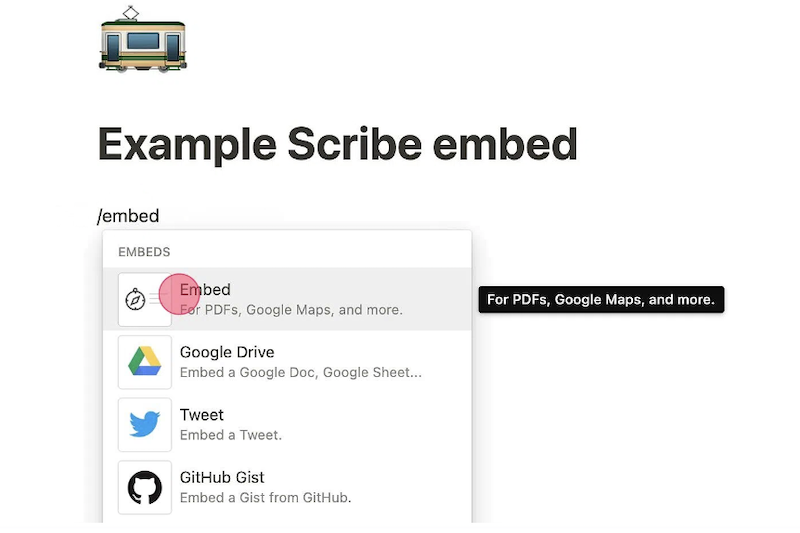
You can use Scribe's AI to generate the full document from scratch or use one of the templates in Scribe's extensive page templates library to build your project documentation:
- Project Documentation Template
- Project Scope Template
- Communication Plan Template
- Project Work Instructions Template
- Project Handover Template
- New Project Management Checklist
To get started, install Scribe and follow the steps below:
1. Navigate to the desired process you want to document. Click the Scribe icon in your Chrome toolbar to start.
2. Click the "Start Capture" button and walk through the process you want to document. Scribe automatically captures screenshots and text based on your actions.
3. Click the "Stop Capture" button. In a few seconds, Scribe will generate a detailed, step-by-step guide.
4. Review the guide, making sure that you've included all relevant information. You can edit to add steps or clarify information if you've missed anything.
5. Ask the AI to add titles, descriptions, additional context, alerts, helpful tips, and more to customize your guide.
6. When your guide is finished, click "Share" and then "Embed".
7. Select the size you'd like and then Click "Copy Embed Snippet" to copy the code.
8. Navigate back to Notion and insert the embed block by typing "/embed" and clicking "Embed".
9. Paste in the Scribe Smart Embed code.
10. Your Scribe is now embedded! You can resize it by clicking and dragging the corners of the frame.
Step 9: Collaboration and communication
Encourage team collaboration by using comments to:
- Discuss project updates.
- Share ideas.
- Ask questions directly on project pages.
Use @ mentions to notify team members when you need their input or action.
Step 10. Track your tasks
Regularly update task statuses within the project database. You can use the status property to indicate progress.
Use filters and views to create custom project views, such as a "My Tasks" view for each team member.
Step 11: Document progress and notes
Notion offers multimedia features to help you document your project progress, meeting notes and important information. You can create pages, sub-pages or sections within project entries to keep everything organized.
You can also use Scribe to capture quick updates and keep the team in the loop on your progress.
Step 12: Reminders and notifications
Set reminders and due dates for critical tasks to stay on top of deadlines. Notion will notify you when tasks are due.
Step 13: Review and adjust
Regularly review project databases and boards to assess progress, identify bottlenecks and adjust project plans.
Step 14: Share and collaborate
Share relevant project pages or databases with stakeholders, clients or external partners to keep them informed and engaged in the project.
Step 15: Archive completed projects
Once a project is completed, archive it or move it to an archive workspace to keep your workspace organized.
Why use Scribe with Notion for project management?
Powered by AI, Scribe can generate an entire document from scratch or improve existing documentation by editing for grammar, length and tone. By using Scribe with Notion for project management, you can improve the efficiency and effectiveness of your projects.
Here are just a few ways that Scribe can streamline your project management:
- Process documentation: With Scribe, you can document your processes and procedures in seconds, making it easier to onboard and train new team members.
- Standardize operating procedures: You can use Scribe to create project management SOPs to ensure your projects are completed consistently and efficiently.
- Boost communication: Create visual step-by-step guides outlining your standard procedures for communication, updates and reports on projects.
- Real-time updates: With easy feedback and universal updates, you can easily keep your documentation accurate, reliable and up-to-date.
- Seamless integration: Scribe integrates seamlessly with Notion, making it simple to add your documentation in just a few clicks.
Create and embed project documentation in seconds ➜
Best practices for planning a project with Notion
Here are some best practices for planning a project with Notion:
1. Define your goals and objectives
What do you want to achieve with your project? What are the specific objectives that you need to meet?
2. Break down your project into tasks
Once you know your goals and objectives, you can break down your project into smaller tasks. This will make it easier to manage and track your progress.
3. Estimate the time and resources required for each task
How long will each task take to complete? What resources will you need, such as people, equipment and budget?
4. Create a timeline
Once you know the estimated time and resources required for each task, you can create a timeline for your project.
5. Track your progress
As you work on your project, track your progress and identify any potential problems early on, so you can adjust as needed.
6. Communicate with your team
Communicate regularly with your team members to keep everyone informed and avoid misunderstandings.
7. Be flexible
Things don't always go according to plan, so it's important to be prepared to make changes to your timeline or your tasks.
8. Document your work
As you work on your project, document your work to track your progress and avoid duplicating work.
9. Celebrate your successes
As you complete tasks and milestones, take some time to celebrate your successes. This will help to keep your team motivated and engaged.
Notion project management FAQs
Does Notion have a project management tool?
Yes, Notion does have a project management tool. With its project management features, users can create tasks, set deadlines, assign team members, and track progress.
Is Notion project management free?
Yes, Notion project management offers a free plan. With the free plan, users can create unlimited pages, collaborate with up to 5 guests, and integrate with various tools like Google Drive and Trello.
For more advanced features and increased collaboration capabilities, users can upgrade to the paid plans starting at $4 per user per month.
Is Notion good for team management?
Notion is a great tool for team management. With its AI project management features, it allows teams to collaborate effectively and track progress seamlessly.
Conclusion
By following these steps and best practices, you can maximize Notion's potential for effective project management.
Scribe streamlines your Notion project management by automating process documentation, saving time and enhancing efficiency. So why wait?
Sign up for Scribe today and experience the difference it can make in your projects!







